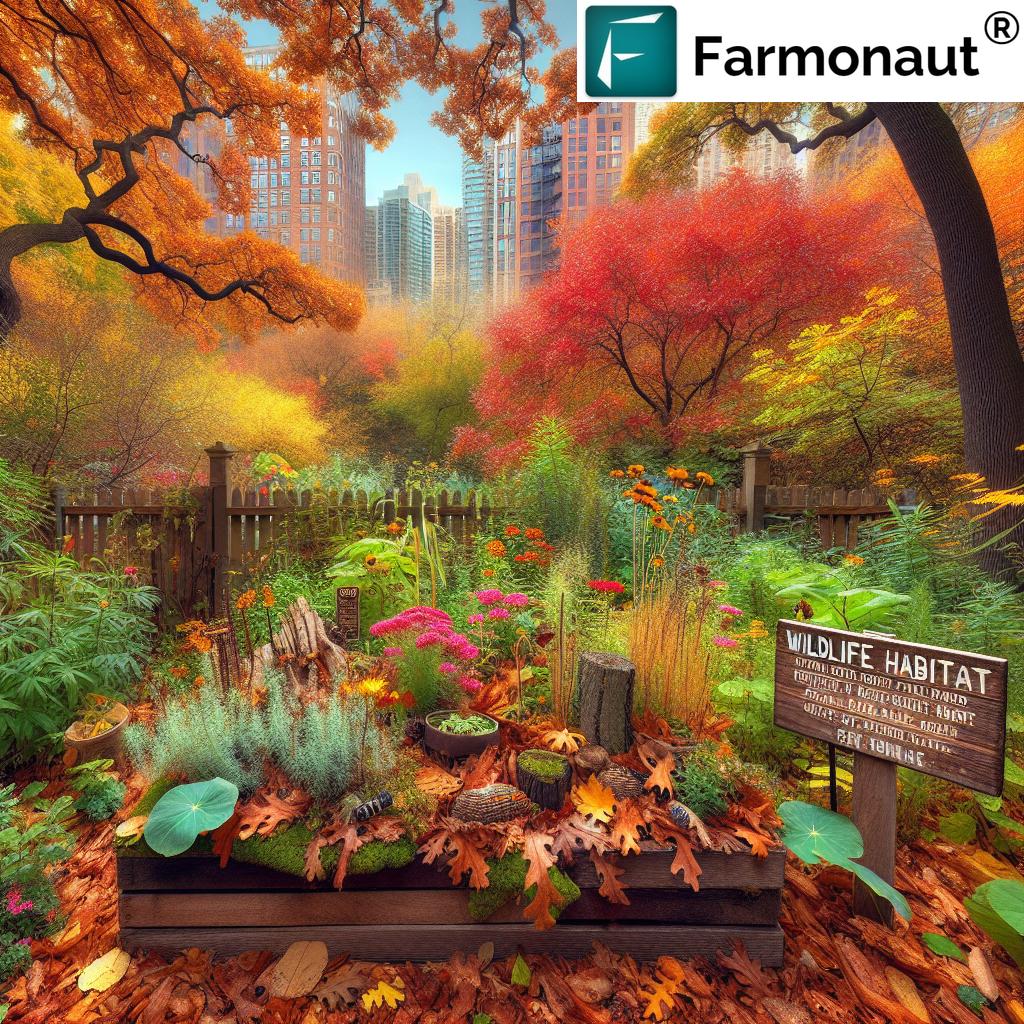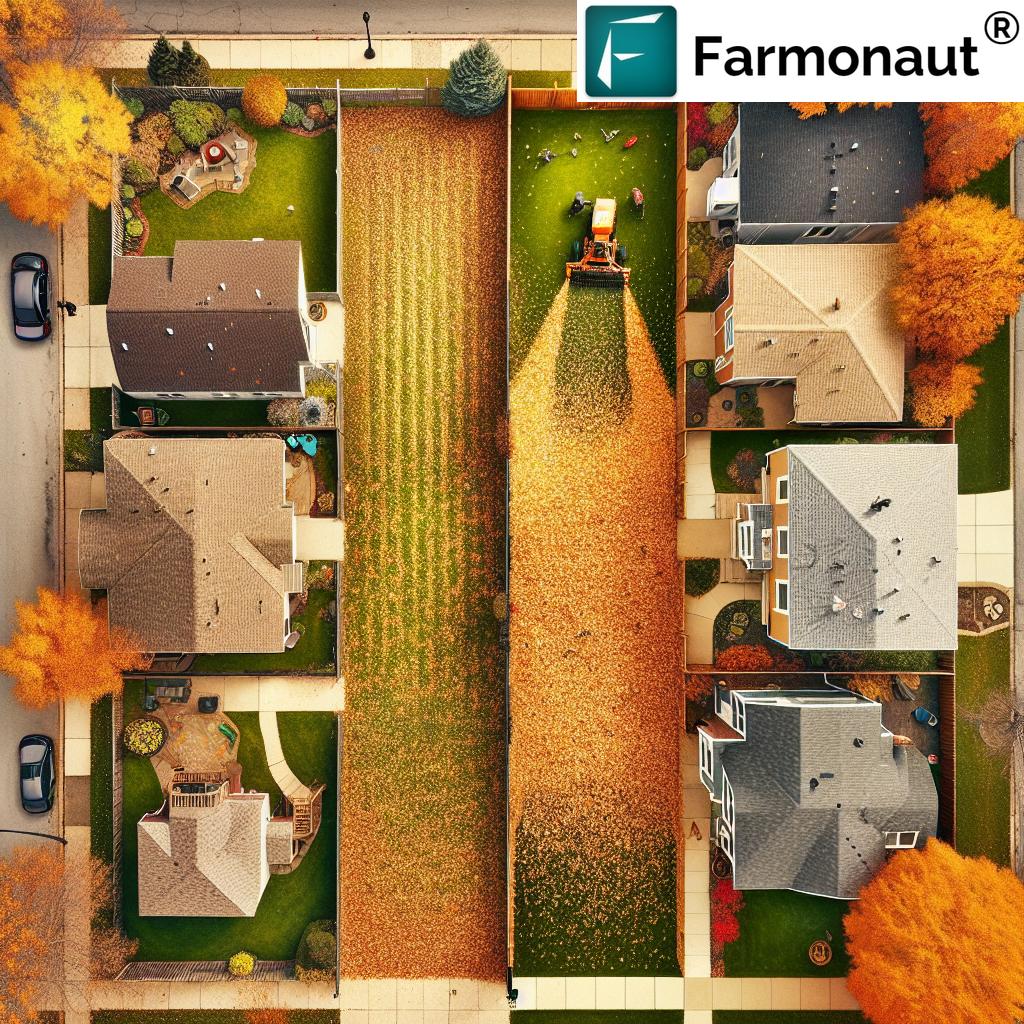Eco-Friendly Gardening in Chicago: How “Leave the Leaves” Movement Boosts Wildlife Habitat and Sustainable Yard Care
“Leave the Leaves” movement in Chicago can increase soil organic matter by up to 25% in a single season.
As we embrace the crisp autumn air in Chicago, a revolutionary eco-friendly gardening practice is taking root across our neighborhoods. The “Leave the Leaves” movement is transforming how we approach fall yard care, turning what was once considered garden waste into a valuable resource for wildlife and sustainable landscaping. In this comprehensive guide, we’ll explore how this simple yet powerful practice is reshaping our urban ecosystem and how you can join the movement to create a more vibrant, sustainable Chicago.
The Rise of the “Leave the Leaves” Movement in Chicago
In recent years, we’ve witnessed a growing awareness of the ecological impact of our gardening practices. The “Leave the Leaves” movement has gained significant traction, particularly in urban areas like Chicago, where every patch of green space counts. This eco-friendly gardening approach challenges the traditional notion of pristine, leaf-free lawns and instead advocates for a more natural and wildlife-friendly yard care routine.

In Chicago’s River Forest neighborhood, resident Christie Hunt exemplifies this new approach. Instead of bagging and disposing of fallen leaves, she carefully rakes them into her flower beds. This simple act serves multiple purposes: it enriches the soil as the leaves decompose, provides essential winter habitat for insects, and reduces the need for chemical fertilizers.
The Science Behind Leaving Leaves
The “Leave the Leaves” movement isn’t just a trendy gardening fad; it’s rooted in solid scientific principles. Here’s why this practice is gaining support from ecologists and environmentalists:
- Soil Enrichment: As leaves break down, they release valuable nutrients into the soil, acting as a natural fertilizer.
- Moisture Retention: Leaf litter helps retain soil moisture, reducing the need for watering and promoting healthier plant growth.
- Insect Habitat: Many beneficial insects, including pollinators like bees and butterflies, overwinter in leaf litter.
- Bird Support: Leaf piles provide foraging grounds for birds, who feed on insects living in the leaves.
Studies show that leaving fallen leaves can support over 50 species of butterflies and moths during winter hibernation.
The Alarming Decline of Insect Populations
One of the driving forces behind the “Leave the Leaves” movement is the alarming decline in insect populations worldwide. This phenomenon, often referred to as the “insect apocalypse,” has serious implications for our ecosystems and food security.
- A study revealed a 75% decrease in flying insect populations over nearly three decades in certain areas.
- Bird populations, which rely heavily on insects for food, have also seen significant reductions.
By providing winter shelter and food sources through leaf litter, we can play a crucial role in supporting these vital populations in our urban environments.
Benefits of the “Leave the Leaves” Approach
| Aspect | Traditional Leaf Removal | Leave the Leaves Approach |
|---|---|---|
| Soil Health | Depletes natural nutrients | Increases organic matter by up to 25% |
| Wildlife Habitat | Minimal support | Provides shelter for various species |
| Pollinator Support | Limited | Shelters ~1000 beneficial insects per sq. yard |
| Water Conservation | Higher water needs | Improves soil moisture retention |
| Chemical Use | Often requires fertilizers | Reduces or eliminates need for chemical additives |
| Time/Cost Efficiency | Labor-intensive removal process | Saves time and reduces yard waste disposal costs |
Implementing “Leave the Leaves” in Your Chicago Garden
Embracing the “Leave the Leaves” movement in your Chicago garden is simple and rewarding. Here are some practical tips to get started:
- Selective Raking: Instead of removing all leaves, rake them into garden beds and around trees.
- Create Leaf Piles: Designate areas in your yard for leaf piles, which will serve as wildlife habitats.
- Mulch Leaves: Use a mulching mower to break down leaves on your lawn, providing nutrients to the grass.
- Leaf Composting: Start a leaf compost pile to create rich, organic soil for your garden.
Remember, while embracing this eco-friendly gardening practice, it’s essential to keep sidewalks and driveways clear to prevent slips and maintain neighborhood aesthetics.
Native Plant Gardening: A Perfect Companion to “Leave the Leaves”
Incorporating native plants into your Chicago garden complements the “Leave the Leaves” approach perfectly. Native plants are adapted to our local climate and provide essential resources for native wildlife. Here’s how you can create a native plant garden:
- Research Illinois native plants suitable for your specific garden conditions.
- Choose a variety of plants that bloom at different times to provide year-round support for pollinators.
- Include native grasses and shrubs to create diverse habitats.
- Avoid using pesticides to protect beneficial insects.
By combining native plant gardening with the “Leave the Leaves” approach, you’re creating a powerful ecosystem in your backyard that supports a wide range of wildlife.

Community Engagement and Education
The success of the “Leave the Leaves” movement in Chicago relies heavily on community engagement and education. Here are some ways we can spread awareness and encourage participation:
- Organize neighborhood workshops on sustainable yard care practices.
- Share information through local gardening clubs and community centers.
- Collaborate with schools to create educational programs about urban ecology.
- Use social media to share success stories and tips using hashtags like #LeaveTheLeaves and #ChicagoEcoGarden.
By working together, we can transform Chicago into a model city for eco-friendly gardening and sustainable urban living.
Technological Support for Sustainable Gardening
While the “Leave the Leaves” movement focuses on natural processes, technology can play a supportive role in promoting sustainable gardening practices. Farmonaut, a pioneering agricultural technology company, offers innovative solutions that complement eco-friendly gardening approaches. While primarily focused on larger-scale agriculture, some of Farmonaut’s principles can be applied to urban gardening:
- Satellite-based monitoring for efficient resource management
- AI-driven advisory systems for optimal plant care
- Tools for tracking environmental impact and carbon footprint
For those interested in exploring how technology can enhance their gardening practices, you can check out Farmonaut’s offerings:
Overcoming Challenges and Misconceptions
While the benefits of the “Leave the Leaves” movement are clear, some challenges and misconceptions persist. Let’s address some common concerns:
- Aesthetics: Some worry that leaving leaves will make their yard look messy. However, with proper management, a leaf-filled garden can be both beautiful and eco-friendly.
- Pest Concerns: While some pests may overwinter in leaves, the benefits to beneficial insects far outweigh this concern. Proper garden management can mitigate pest issues.
- Lawn Health: Some fear leaves will smother their lawn. However, mulching leaves with a mower can actually benefit grass health.
- City Regulations: Check local ordinances regarding leaf management. Many cities are becoming more supportive of eco-friendly practices.
The Broader Impact: Urban Ecosystem Management
The “Leave the Leaves” movement is more than just a gardening trend; it’s a crucial component of urban ecosystem management. By adopting this practice, we’re contributing to:
- Increased biodiversity in urban areas
- Improved air and water quality
- Reduced carbon footprint from leaf disposal and transportation
- Enhanced natural pest control, reducing the need for harmful chemicals
These collective efforts can transform our cities into thriving ecosystems that support both human and wildlife populations.
FAQs About the “Leave the Leaves” Movement
- Q: Will leaving leaves attract pests to my garden?
A: While some pests may overwinter in leaves, the benefits to beneficial insects and soil health outweigh this concern. Proper garden management can help mitigate any pest issues. - Q: How can I participate if I have a small yard or live in an apartment?
A: Even small spaces can contribute! Use leaves in potted plants, create a small compost bin, or volunteer in community gardens. - Q: Are there any plants that don’t benefit from leaf cover?
A: Some plants, like roses, may be susceptible to fungal diseases if leaves are left around them. Research your specific plants and adjust accordingly. - Q: How can I convince my neighbors to join the movement?
A: Share information about the benefits, offer to help with their yards, and lead by example with your own beautiful, eco-friendly garden. - Q: What should I do with leaves on my lawn?
A: Use a mulching mower to chop leaves into small pieces that will decompose and nourish your lawn. For excess leaves, rake them into garden beds or compost piles.
Conclusion: Embracing a Greener Future for Chicago
The “Leave the Leaves” movement represents a significant shift in how we approach gardening and yard care in Chicago. By embracing this eco-friendly practice, we’re not just creating healthier gardens; we’re contributing to a more sustainable and biodiverse urban environment. As we move forward, let’s continue to educate, innovate, and collaborate to make Chicago a leader in sustainable urban living.
Remember, every leaf left in your yard is a small but meaningful contribution to our city’s ecosystem. Together, we can create a greener, more vibrant Chicago, one leaf at a time.







